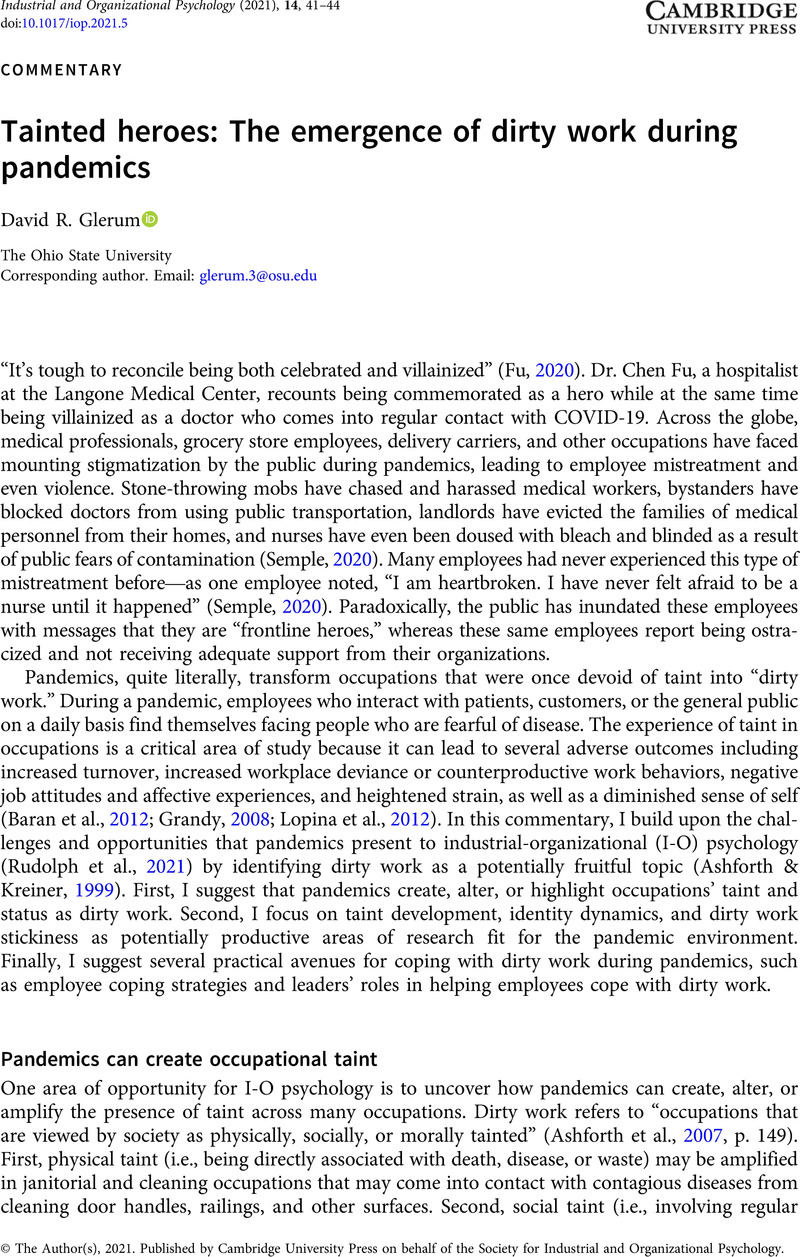Crossref Citations
This article has been cited by the following publications. This list is generated based on data provided by Crossref.
Lalonde, Carole
and
Dufour, Marie-Ève
2022.
De zéro à héros : la reconnaissance du travail ingrat et l’importance d’une gestion éthique des soins dans les centres d’hébergement et de soins de longue durée.
Éthique publique,
Galazka, Anna Milena
and
Wallace, James
2023.
Challenging the ‘dirty worker’—‘clean client’ dichotomy: Conceptualizing worker‐client relations in dirty work.
International Journal of Management Reviews,
Vol. 25,
Issue. 4,
p.
707.
Airington, Zachary
Woods, Freya A.
and
Ruscher, Janet B.
2025.
Who hails the unsung heroes? Individual differences in heroizing essential workers during a viral outbreak.
Personality and Individual Differences,
Vol. 236,
Issue. ,
p.
113027.



